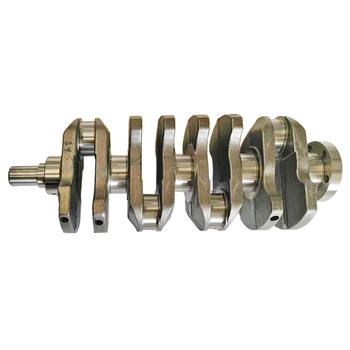Unlocking the Secrets of Crankshaft Position Sensors
To be honest, you might not give much thought to your car's crankshaft position sensor – until it starts acting up. Interestingly enough, this small device plays a pivotal role in your vehicle's engine management system. It helps monitor engine speed, position, and even some functions of your fuel injection system. So, what exactly does this unsung hero do? And how can you keep it working at its best? Let's dive in.
What is a Crankshaft Position Sensor?
The crankshaft position sensor is a vital component in your car's engine management system. It detects the position and rotational speed of the crankshaft, which in turn drives the engine's pistons. This information allows the engine control unit (ECU) to precisely control fuel injection and ignition timing.
How Does It Work?
Most modern crankshaft position sensors are hall-effect sensors, which use a magnetic field to determine the crankshaft's position. As the crankshaft rotates, it passes by a small magnet attached to the sensor. This interaction generates an electrical signal that the ECU uses to determine engine speed and position.
Common Issues with Crankshaft Position Sensors
Crankshaft position sensors can experience various issues over time, such as:
These issues can lead to starting problems, poor engine performance, and even check engine warnings.
How to Keep Your Crankshaft Position Sensor in Top Shape
Here are some tips to help keep your crankshaft position sensor functioning optimally:
- Regularly inspect and replace related parts (e.g., timing belt or chain) to minimize wear and tear.
- Keep your engine clean and well-maintained to prevent contamination.
- Pay attention to any warning signs, such as difficulty starting or poor engine performance, and address them promptly.
When to Replace Your Crankshaft Position Sensor
If you suspect your crankshaft position sensor is faulty, consult a professional mechanic for a proper diagnosis. Some signs that it may be time to replace the sensor include:
- Persistent starting problems
- Engine misfires, stalls, or hesitation
- Check engine light is on, and the code points to a crankshaft position sensor issue
The Bottom Line
In my experience, maintaining a healthy crankshaft position sensor is crucial for optimal engine performance. Many experts agree that paying attention to this often-overlooked component can save you from headaches down the road. So, take a moment to appreciate your crankshaft position sensor and give it the care it deserves.
Now, I'd like to hear from you. Have you ever experienced issues with your crankshaft position sensor? How did you resolve them? Share your experiences in the comments below!




